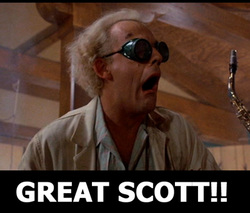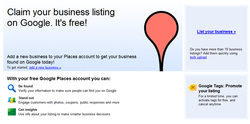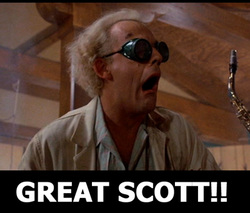Compelling content: (web site, blog, YouTube, social media and so on) Helpful, how-to’s, interesting, cool, viral (worth sharing), top ten lists. Be educational, both with basic helpful tips and in how your business works. See http://www.crutchfield.com/App/Tab/Learn.aspx to see some helpful content Crutchfield provides to customers. Whole Foods Market (http://blog.wholefoodsmarket.com/) is an excellent example of what an awesome blog looks like. Most experts recommend using the url blog.yoursite.com or yoursite.com/blog as the address to your blog, but, if you are just starting out with a blog it’s okay to use a free one like Wordpress.com or BlogSpot. Whatever platform you are using, blogs, Youtube, social media; do not push out a sales message, it’s more about being informative and helpful. I've repeated this several times, it's so you will remember. Nothing wrong with promoting the business, but that’s secondary to sharing. If you ever have trouble coming up with content ideas, pick a buyer segment that you are presenting to. For example, a cell phone repair and retailer might write the top ten iphone tech tweaks for an advanced user and helpful hints for a beginner. When you start a blog or make videos, it’s about demonstrating thought leadership, illustrating that you know what you’re doing. The results of an active web presence is a lot of content, a better search ranking, and some new customers. It’s also good to refer someone to a blog post or video you made about something that is a common issue, “Oh, I made a video on how to set up your email with the iphone, here’s the link.” All of the content you put out also helps target ideal customers. Remember, everyone is not your ideal customer. You should build an ideal customer profile like the FBI does with serial killers. It sounds a bit crazy, but you really should understand who your ideal customer is. John Jantsch talks a lot about this topic in The Referral Engine.
0 Comments
A web site’s existence doesn't equal effectiveness, such as traffic, interest, awareness, or lead conversion. Most online tactics, whether it’s Facebook or a blog, take tender loving care to raise and grow. In fact, it’s pretty much like having a pet. When was the last time you didn’t feed, walk, or pay any attention to your dog for a week, let alone a single day? Just like your Doberman, your Facebook page needs nurturing. A fleshed out web site is nothing more than a shell, or as commonly referred to in the world of new marketing, an online brochure. A Facebook page updated about as frequently as you get your oil changed is not so much a point of attraction as it is a rotting piece road kill. A stagnant social media presence in particular is more of a detriment than an advantage. An anesthetized Facebook page or Twitter feed isn’t attracting anyone. It also offers apprehension from a consumer perspective. The last thing you want is someone to question your credibility, capabilities, or even existence as an organization. Create, aggregate/share, and inform your customers with information relevant to them. Ask yourself how can you help. Is there is advice or technical information that can be offered? How can you entertain your followers? Making a short, fun video (quality, or even rapidity, of the content often trumps overproduced, stale videos). Even a quick 30-second snippet from an event you hosted is well worth sharing. Upload photos, and then upload more! Tell the story of your business. Short on ideas? Ask your followers, post a query on Facebook or Twitter. Lastly, cultivate interaction: two-way communication. Don’t talk “at” people (that’s the old way of doing things) talk to them, and engage. Respond to comments and questions; initiate the conversation. You must stay determined in taking care of your online presence. Feeding your dog when it’s most convenient is most careless. Don’t worry if you’re unsure about what exactly to share at first or are intimidated by the tech talk. Most people who call themselves “social media experts” are experts at pretending to be an expert and much of the technical lexicon is gobbledygook. There is no more powerful tool available in the marketing arsenal, no bigger bang for your buck, than a compelling web presence. In the world of consumer behavior there are two types of exposure to information, and they provide practical elucidation for inbound marketing.
First, there’s intentional exposure, which is goal directed search behavior; and next, accidental exposure, where there’s an unintended exposure, such as an ad in a magazine, a commercial or walking billboard. Which one of these sounds more like inbound marketing? Accidental exposure is basically interruptive marketing, the traditional outbound techniques that devour marketing budgets and that business schools love to teach. Intentional exposure is all but a definition for inbound marketing; there is an active (deliberate) search to make sense of something. In that goal directed search online, relevant sites and information are presented. The sites with valuable content are utilized more often. Amazon.com just isn’t the online equivalent of Wal-Mart, it’s a hub for user-generated content (UGC): product reviews and ratings. That’s valuable content when making a purchase. More importantly, in the decision making process this is considered intentional exposure, because people actively seek out Amazon product reviews before buying a product. Further, web page ads are being ignored, ignored in the same fashion that you would flip past an advertisement in a magazine; they can even be outright blocked online. That’s like buying a magazine with all the ads and inserts torn out. Think like a publisher and generate some content, like Crutchfield.com does, or facilitate UGC like Amazon and overlook the accidental, interruptive, exposure, the same way you and everyone else disregards advertisements. Do you think a Places page with just a link to your Web site is going to cut it? Time to get your hands dirty, or at least your typing fingers… if your keyboard is dirty. Start by checking out the top five results for a few different Places searches. Most of those listings have a lot of information about the business; photos, videos (videos do not have to be your own, they can be links to videos related to your business), hours of operation, contain plenty of details and are verified listings (the business owner verified they made the listing). So, guess what you should do? Yep, fill all that in; you’re creating your phonebook ad, which is completely free by the way, so use good grammar and compelling verbiage when necessary. Don’t post a faded photo you scanned in of your pizza place that you’ve had hanging on the wall since 1986. Take the time to upload a nice photo that displays the charm of your location, post some interior shots with some smiling customers while you’re at it, “Here’s a slice on the house, say ‘cheese’.” That was a bad pun, I apologize. By verifying your listing and filling in all those blanks, you are one step ahead of all the listings who have yet to do this, however, you are still three steps back from the top listings. This is where relevance and authority comes into play. Go check out the sections below the photos and videos: the Reviews from around the web, Reviews from Google users, and More about this place. This is where the action is; links from other sites (inbound links) and traffic on your Place page (activity). More reviews and inbound links shows Google that you have more authority and should be listed higher. Invite some customers to write reviews of your business.
The greater the number of reviews from customers will help in multiple ways. First, by creating relevance and authority for your page by not only allowing people to read reviews and gain some insight about your business but also it displays that your page has some activity and is more or less functional. People will click on your page more often to read the reviews. Those reviews from around the web signal to Google that you have community significance and help boost your listing; the same thing with the external links, in the more about this page section. The bottom line is, the greater your overall online presence, the higher your ranking in the Places listings. Because inbound links are part of the Places pages, it’s very similar to a regular Google search results page, only Google displays those pages and you can see the inbound links and overall authority and relevance of a Places page right away. There’s a multitude of ways to gain relevance and authority online. Don’t get frustrated if things do not happen instantly, because they won’t. Unbranded, organic search results can take weeks or even months to show results of your efforts to break into the top ten.Guess what? Making a Google Places page isn’t hard. What have you got to lose? Did I mention that it’s completely free! Content is the key. With great content from your site, blog, social media (you are doing this stuff too, right) and any inbound links and reviews, will compound the authority and relevance of your online presence and only boost your search results ranking further. There are plenty of web marketing books available, some of which are remarkable (see author Seth Godin). Unfortunately, some are exhaustively primitive; attempting to break down the world of online marketing into bite size pieces that even Marty McFly would be able to comprehend if he blasted into the Facebook era and wanted to take a crack at e-marketing. And none of them mention Google Places (I will refer to it as “Places”). This is disappointing, because it is such a powerful tool, especially for the small business owner. Places replaces the big, chunky phonebook; the same phonebook that lawyers would spend tens of thousands of dollars to display a full-page ad. The Internet, and Google Places in particular, has leveled the playing field. Small business owner, be small no more! Get found on Places and you’re nearly guaranteed to generate some business.
People don’t flip through the phonebook anymore; everything is a Google search away, literally right at your fingertips. Why refer to the phone book when looking for a Chiropractor? You can Google “Chiropractors in New Brunswick, NJ” and find the ten nearest to your residence right in Google Places; which provides reviews, a Places page with information, and even directs you to the doctors’ Web sites. I like to get a little background and see what people are saying about the person cracking my back. Here’s one that reads, “Dr. Hugh Jass is kind and frequently calls to check up on my condition, but I swear he always farts in the treatment room right before he leaves!” Hmmm, I think I’ll go with Dr. Gregory instead. Obviously, I'm kidding, but the Places pages are that interactive; allowing not only reviews and inbound links from all over the web to appear on the page, but also enabling photos and videos to be uploaded. There’s no amount of money that could make a static phonebook advertisement do that. One pitfall of Google Places; it is rapidly decelerating the production of phonebooks, in turn, depleting the phonebook tearing strongman of source material to destroy. |



 RSS Feed
RSS Feed